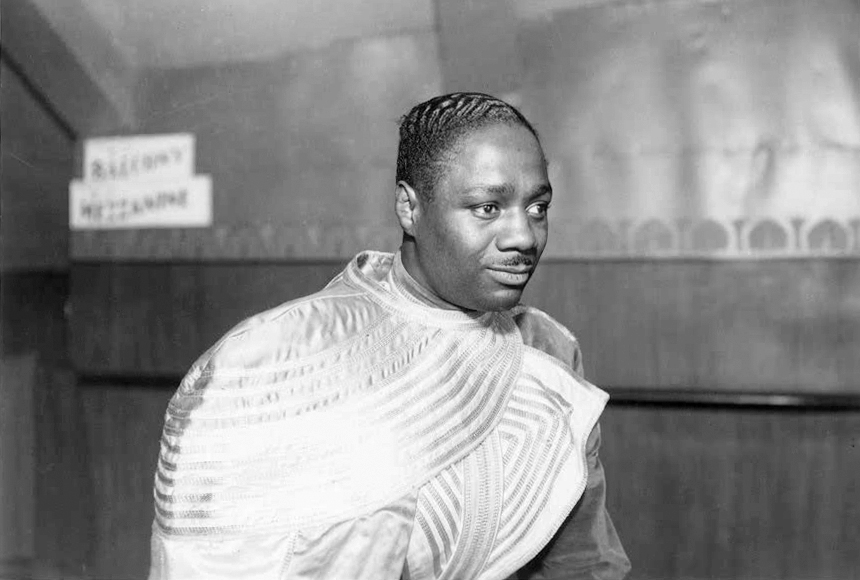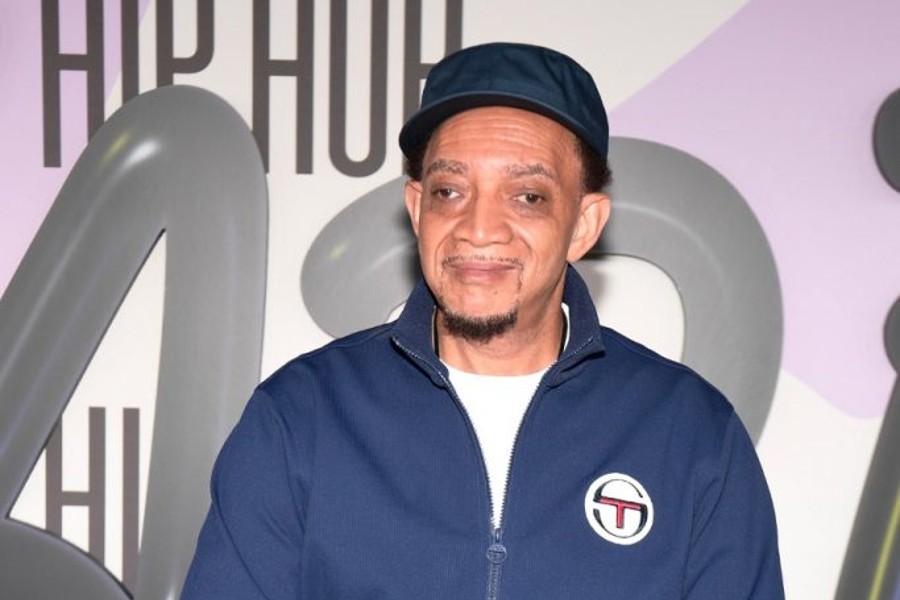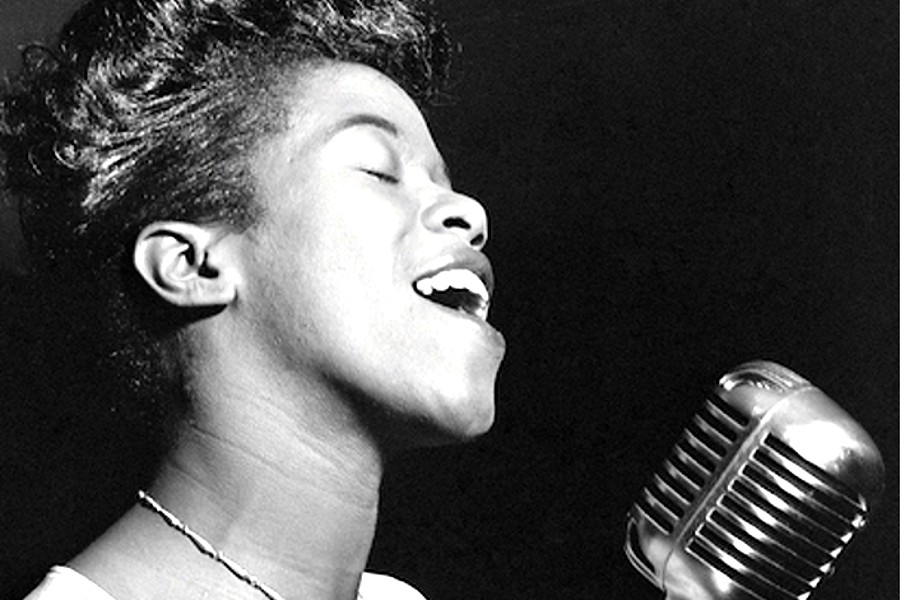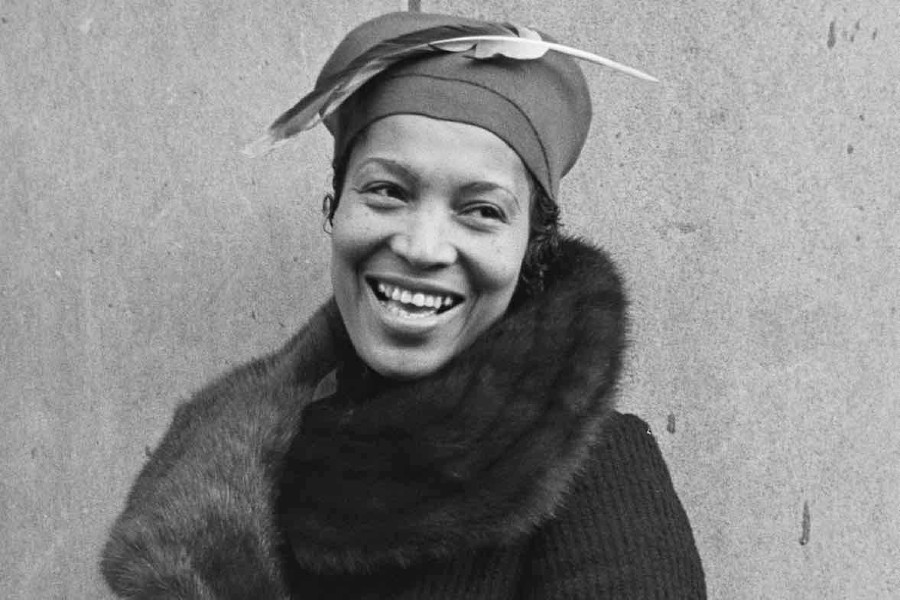Lee was born as ‘Leonard Lionel Cornelius Canegata on March 3, 1907 in Harem, New York City. He was raised by his West Indian parents in Harlem, NY. He was a talented musician, and by age 12 was a concert violinist. In his early teens, he ran away from home to become a jockey and after growing too large to ride, he decided to try boxing.
Lee began boxing in 1926.Before one match an announcer, stumbling over Lionel’s surname, mispronounced his name as ‘Canada Lee’. Lee adopted the mistake as his own. At 5 feet 9 inches (1.75 m) and about 144 pounds (65 kg), he fought as a welterweight. His professional boxing record is listed variously as 38 wins with 15 knockouts, 32 losses with 8 knockouts, and 8 draws; 44 wins with 11 knockouts, 31 losses, and three draws; or 33-31-7 with 13 knockouts. He fought and lost to world champions Jack Britton, Tommy Freeman, and Lou Brouillard. He boxed a 10 round draw with middleweight champion Vince Dundee in 1928.
During a 1930 bout with Willie Garafola a glancing blow to his right eye detached his retina. His sight was impaired and ended his career as a boxer 1933. Lee left the ring and began to conduct a fifteen-piece orchestra at a nightclub in Harlem, The Jitterbug, which he also managed. Neither the band nor the nightclub could survive the Great Depression. Despite having made an estimated US$90,000 during his boxing career (roughly equivalent to $1,440,438 today), by the mid-1930s Lee was impoverished.
Lee’s acting career began by accident. While at a YMCA to apply for a job as a laborer, Lee stumbled upon an audition in progress and was invited to audition. He earned a supporting role in Frank Wilson’s 1934 production of Brother Moses, which played to a crowd of ten thousand in Central Park. Lee, who received favorable reviews, settled on acting as a new career.
This career brought him into contact with many of the most famous actors and directors of the late 1930s. Lee summered at Pine Brook Country Club in Nichols, Connecticut. Pinebrook is best known for becoming the summer home of the Group Theatre (New York). Some of the other artists who summered there were; Elia Kazan, Harry Morgan, John Garfield, Lee J. Cobb, Will Geer, Clifford Odets, Howard Da Silva and Irwin Shaw.
Working with the Federal Theater Project, he appeared in Stevedore in 1934, with various small roles following. His first major role in a seminal production came in Orson Welles’s so-called Voodoo Macbeth (1936) for the Negro Theater Project, a division of the Federal Theatre Project. Lee played Banquo in this controversial production, which featured a Haitian motif in the set, African-themed drumming and a black cast of over two hundred actors. The play’s treatment of African-Americans proved controversial, and Lee is reported to have rescued Welles from angry protestors on two occasions.
After two more years of work in black theater and Theater Project productions, including the lead role in The Big White Fog, Lee reunited with Welles for the stage production of Harlem resident Richard Wright’s Native Son. The 1941 production was a spectacular hit, both for Welles and for Lee, whom The New York Times called “the greatest Negro actor of his era and one of the finest actors in the country.” Wright also applauded the performance, noting the contrast between Lee’s affable personality and his intensity as Bigger Thomas. The sympathetic portrayal of a black man driven to murder by racial hatred brought much criticism however, especially from the Catholic Diocese of Brooklyn and the Legion of Decency, and the ensuing pressure forced the play to close in December 1942.
During World War II, Lee continued to act in plays and in films. In 1942, he played in two comedies by William Saroyan; Lee earned approving reviews despite the generally negative response to these plays. In 1943, he took a lead role in a production of the race-themed drama South Pacific, which was directed by Lee Strasberg, and concerned a cynical African-American soldier who had racially based reservations about fighting the Japanese. The following year, he became the first African-American to play Caliban in Margaret Webster’s 1945 Broadway rendition of The Tempest. Lee had admired Shakespeare since his turn in Macbeth; indeed, at the time of his death he was preparing to play Othello on film. The following year he participated in another milestone; George Rylands cast him as Bosola in a Broadway staging of John Webster’s The Duchess of Malfi: this was one of the first occasions on which a black actor portrayed a white character (Lee wore whiteface).
After the war, Lee continued to act. In 1946, he played a principal role in On Whitman Avenue, a drama about racial prejudice directed by Margo Jones. Lee produced the play, making him the first African-American producer on Broadway; the play spoke directly to the need for interracial housing following WWII and won the praise of former First-Lady Eleanor Roosevelt, who wrote weekly columns encouraging readers to see it. Two years later, he played the part of an obedient slave in Let My People Go, a dramatization of the life of Denmark Vesey.
Lee made his screen debut in Keep Punching (1939), a film about boxing. Perhaps his most famous film role was in Alfred Hitchcock’s Lifeboat (1944), in which he played a sailor. Lee insisted on changing his dialogue, which had been a semi-comical dialect typical of racist films. In 1947, he played a supporting role in Robert Rossen’s Body and Soul, another boxing picture. In 1949, he took another supporting role in Lost Boundaries, a drama about passing. Lee’s last film role was in Cry, the Beloved Country (1951).
Along with his varied and successful stage and screen careers, Lee became the first African-American DJ on a major radio station hosting The Canada Lee Show, and would continue a successful and lengthy radio career as both actor and narrator. His dedication to the groundbreaking series New World A-Comin’, a radio show dedicated to presenting Negro history and culture to mainstream American audiences.
As an actor, Lee came into contact with many of the leading progressive figures in the country. Langston Hughes, for instance, wrote two brief plays for Lee; these were submitted to the Theater Project, but their criticism of racism in America was deemed too controversial, and neither was staged. Lee spoke to schools, sponsored various humanitarian events, and began speaking directly against the existing segregation in America’s Armed Forces, while simultaneously acknowledging the need to win the Second World War. To this latter end, he appeared at numerous USO events; he won an award from the United States Recruiting Office and another from the Treasury Department for his help in selling war bonds. These sentiments would carry on throughout his life, culminating in his early firsthand account of apartheid in South Africa.
By the late 1940s, the rising tide of anti-Communism had made many of his earlier contacts politically dangerous. In 1949, the trade journal Variety stated that under no circumstance was he to be used in American Tobacco’s televised production of a radio play he had recently starred in because he was “too controversial.”
In the same year, the FBI offered to clear Lee’s name if he would publicly call Paul Robeson a Communist. Lee refused and responded by saying, “All you’re trying to do is split my race.” According to newspaper columnist Walter Winchell, Lee stated that he intended to come out and “publicly blast Paul Robeson.” However, the fact that the friendship between the two actors remained until Lee’s death suggests that Robeson put no faith in Winchell’s claim.
At the height of the Hollywood blacklist, Lee managed to find work in 1950 as the star of a British film Cry, The Beloved Country, for which both he and Sidney Poitier were smuggled into South Africa as indentured servants in order to play their roles as African ministers. During filming he had his first heart attack, and he never fully recovered his health.
The film’s message of universal brotherhood stands as Lee’s final work towards this aim; after it, the blacklist prevented him from getting work. Scheduled to appear in Italy to begin production on a filmed version of Othello, he was repeatedly notified that his passport “remained under review.”
Canada Lee met and was an influence on H. Jack Geiger, founder of Physicians for Social Responsibility. They met in 1940, when Geiger, a 14-year-old middle class Jewish runaway, was backstage at a Broadway production of Native Son. Lee agreed to take Geiger in when he showed up at his door in Harlem asking for a place to stay. Geiger stayed with Lee for over a year (with the consent of Geiger’s parents), and Lee played the role of surrogate father. During his time with Lee, Geiger was introduced to people like Langston Hughes, Billy Strayhorn, Richard Wright, and Adam Clayton Powell. After many years of varied experiences and an on-going friendship with Lee, Geiger eventually became a journalist, then a doctor. He later went on to formulate the first community health center in the United States – Columbia Point Health Center in Dorchester, Massachusetts.
Geiger would go on to become active in civil rights, to become the founder of Physicians for Social Responsibility, then Physicians for Human Rights, establishing community health centers in Mississippi and South Africa, which would eventually lead to 900 community health care centers providing primary health care for more than 14 million low income people in the country. Geiger says he would never have moved so deeply in these worlds so quickly if not for his experiences with Canada Lee.
Lee was married twice and between the two marriages carried on a long-term love affair. In December 1925, he married Juanita Waller, by whom he had a son, the actor Carl Vincent Lee. They were divorced during the controversy over Native Son.
In 1934, he began a love affair with publisher and peace activist Caresse Crosby despite the threat of miscegenation laws. They often had lunch in uptown New York in Harlem at the then new restaurant Franks where they could maintain their secret relationship. When Lee was performing in Washington D.C during the 1940s, the only restaurant in Washington D.C. where they could eat together was an African restaurant named the Bugazi. Crosby and Lee’s intimate relationship continued into the mid-1940s. In March 1951 Lee married Frances Pollack and they remained together until he died just over a year later.
[youtube http://www.youtube.com/watch?v=5f_vGxm1LVQ&w=560&h=315]
Become a Harlem Insider!
By submitting this form, you are consenting to receive marketing emails from: Harlem World Magazine, 2521 1/2 west 42nd street, Los Angeles, CA, 90008, https://www.harlemworldmagazine.com. You can revoke your consent to receive emails at any time by using the SafeUnsubscribe® link, found at the bottom of every email. Emails are serviced by Constant Contact









